The letter Kāf is one of the fundamental letters in the Arabic language. It is characterized by its easy pronunciation and clear shape, making it suitable for teaching children at early learning stages. The forms of the letter Kāf vary depending on its position in the word—whether at the beginning, middle, or end—as well as whether it appears in a connected or isolated form. In this lesson, we will explore these shapes in a simplified way, along with practical examples that help learners accurately and easily recognize the forms of the letter Kāf.
Interactive Exercises on the Forms of the Letter Kāf
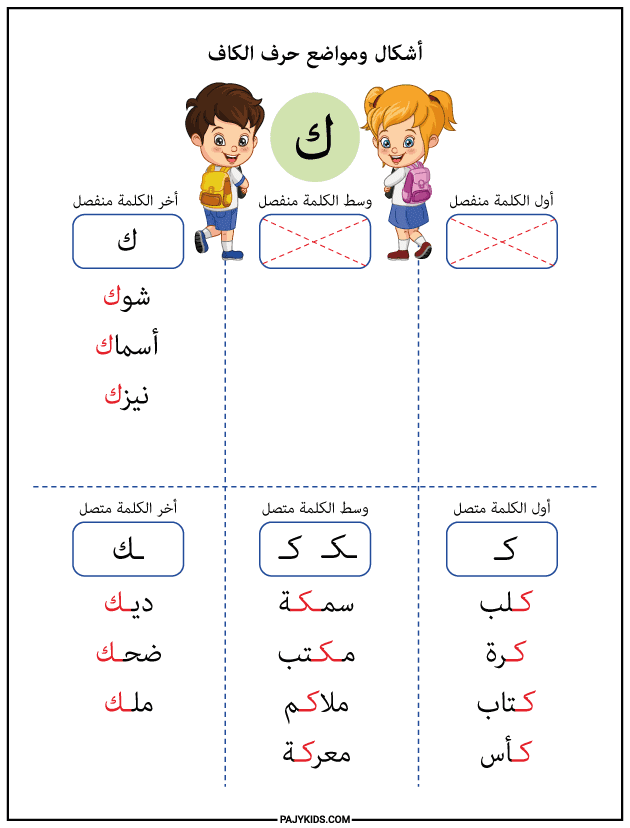
- The Form of Kāf at the Beginning of a Word
When the letter Kāf appears at the beginning of a word, it connects only to the letter that follows it and is written like this: “كـ”.
Examples: Kalb (dog), Kitāb (book), Kurah (ball), Kawkab (planet), Ka’s (cup).
In this position, the letter begins with a curved stroke from top to bottom. In some Arabic scripts, a small stroke (known as the “hand of Kāf”) appears, but in initial position this mark is usually omitted. This is one of the most essential forms of the letter Kāf that learners must master in early education.
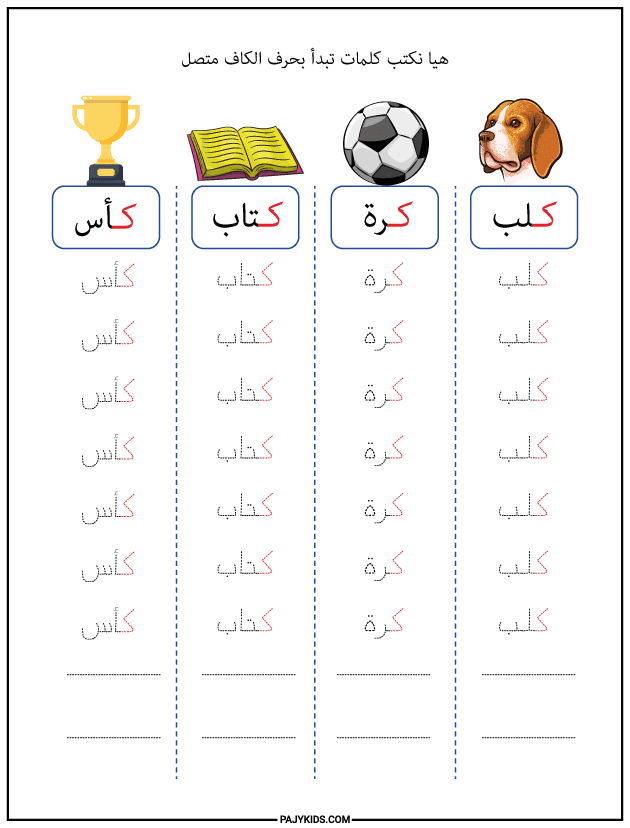
- The Form of Kāf in the Middle of a Word
When the Kāf occurs in the middle of a word, it connects to the preceding and following letters, and may appear in the form: “ـكـ” or “كـ”.
Examples: Maktabah (library), Sikkīnah (knife), Mamlakah (kingdom), Fikrah (idea), Samakah (fish), Mulākim (boxer), Ma‘rakah (battle).
In this position, the letter blends smoothly with surrounding letters. The “hand of Kāf” is sometimes prominent, depending on the font style. This is a frequently used form of the letter Kāf, making regular practice essential.
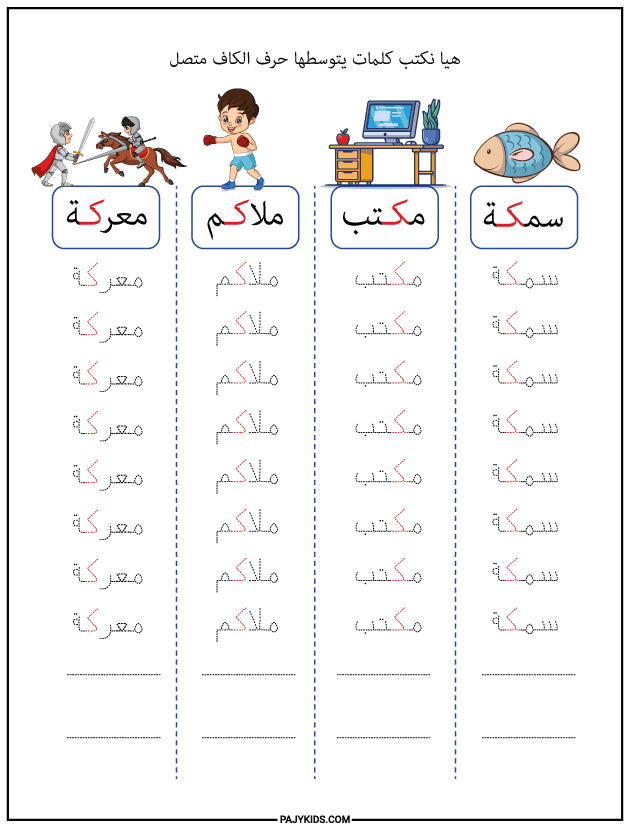
- The Form of Kāf at the End of a Word (Connected)
When the letter Kāf appears at the end of a word and is connected to the letter before it, it is written as: “ـك”.
Examples: Samak (fish), Dīk (rooster), Malik (king), Ḍaḥik (he laughed).
This form of Kāf extends horizontally along the baseline with a final curve. The “hand of Kāf” remains visible in some scripts, making it one of the important forms of the letter Kāf that learners should recognize.
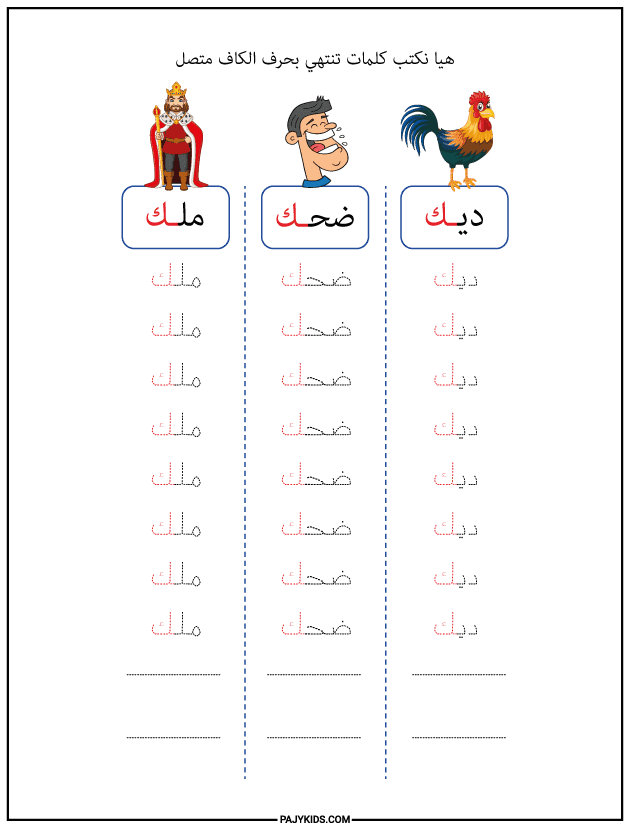
- The Form of Kāf at the End of a Word (Isolated)
When the Kāf appears at the end of a word following a letter that does not connect to it, it is written in its isolated form: “ك”.
Examples: Shawk (thorn), Asmāk (fishes), Nayyizak (meteor).
In this position, the Kāf appears independently and clearly, making it easy for learners to distinguish and identify in both reading and writing.
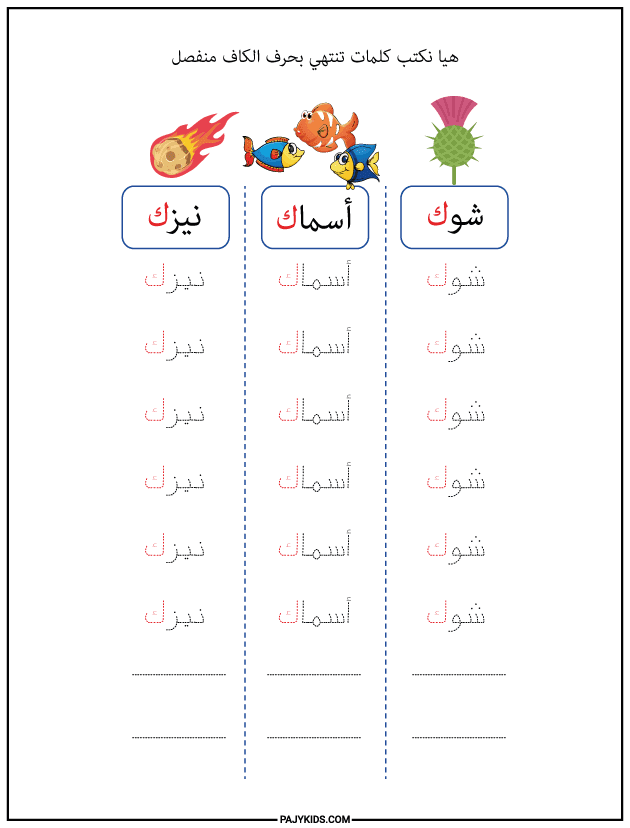
Mastering the forms of the letter Kāf significantly enhances the learner’s reading and writing skills, especially in distinguishing similar-looking letters like “Kāf” (ك) and “Lām” (ل). Continuous practice using real words and short sentences helps build children’s confidence in correct writing and reinforces their visual recognition of various letter shapes in Arabic.